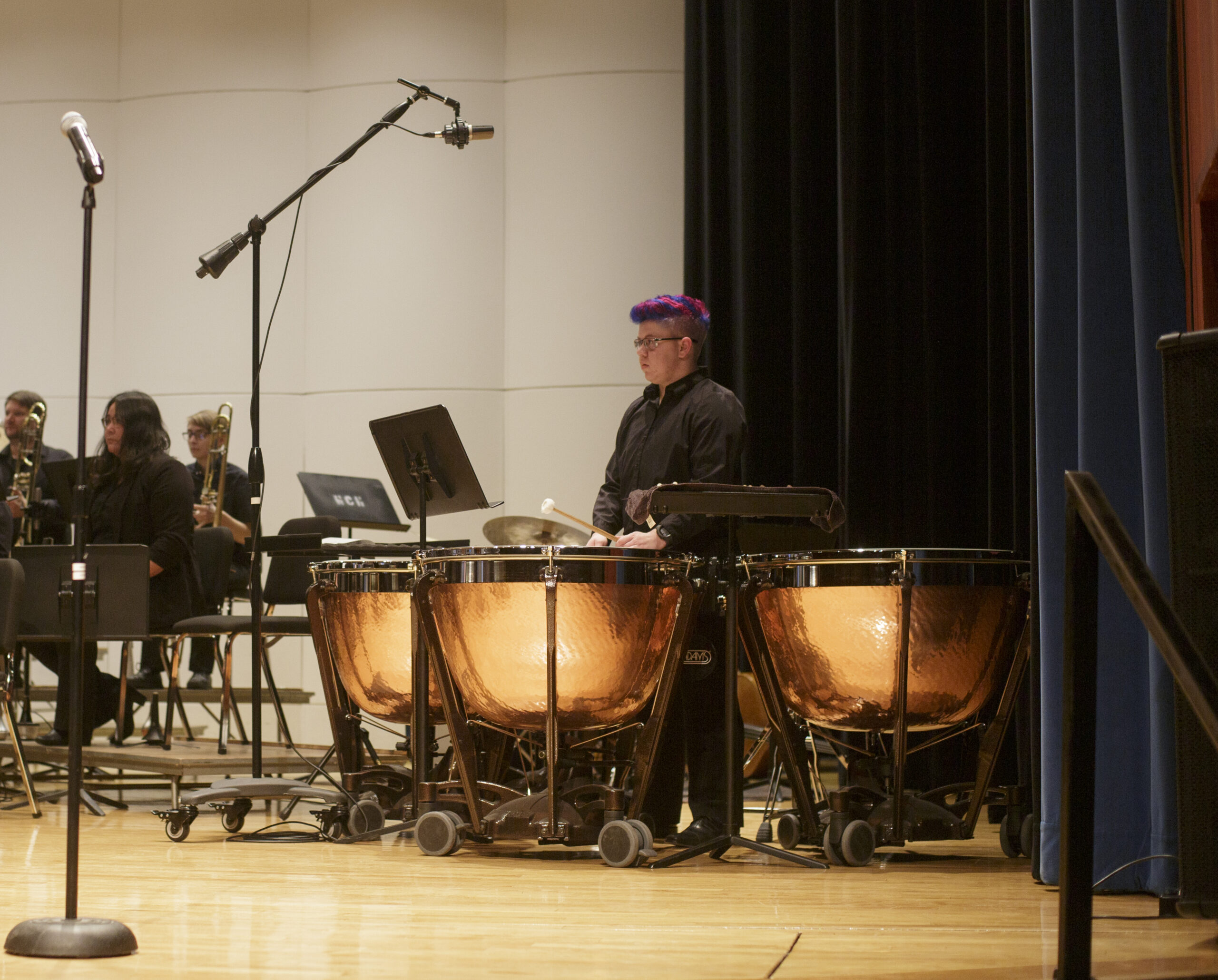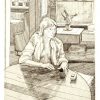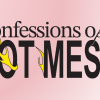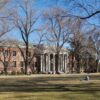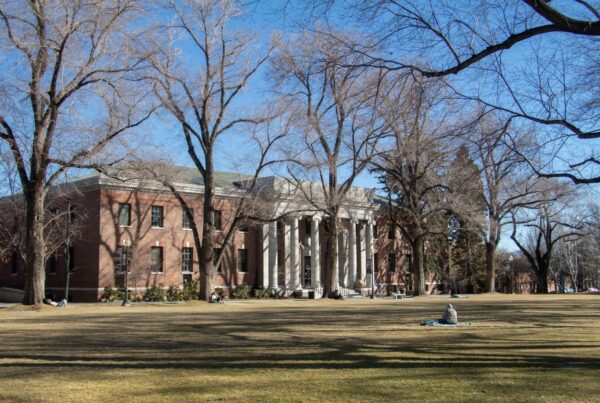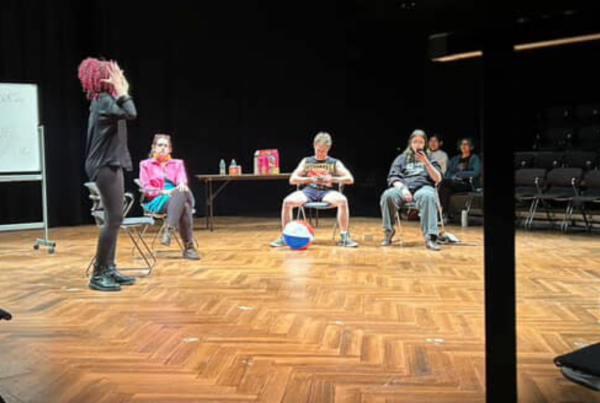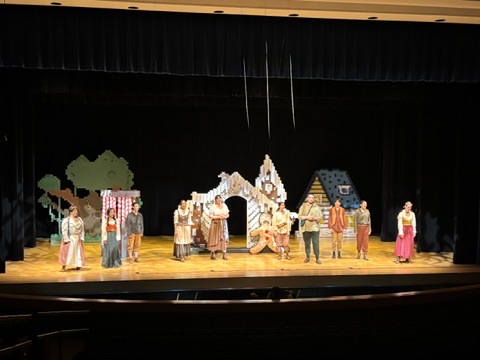The Nevada Concert Winds and the Nevada Wind Ensemble took to the stage on Dec. 2 in the Nightingale Concert Hall for a festive end to their semester of performances. On the program was a sampling of Christmas carols—familiar and fresh—and a sparing touch of jazz.
The two ensembles, consisting of brass, woodwind and percussion players from the University of Nevada, Reno, are open by audition to all students—music majors and not.
For the first half of the program, Nevada Concert Winds took the shift, opening the lineup with “Christmas in Spain.”
The 2016 piece from composer Kevin Day—conducted by grad student Max Deger—made for a sweeping, spirited start to the program, with room for the ensemble to contribute some excellent, unexpected dramatic timing. At just over 3 minutes, “Christmas in Spain” straddled an impressive range of moods, showcasing perhaps Nevada Concert Winds’ greatest strength: range.

Grad student Max Deger takes the stage to conduct the Nevada Concert Winds for “Christmas in Spain.”
Succeeding it was “In The Bleak Midwinter,” under guest conductor Stephen Eubanks. The setting by Gustav Holst of a carol by poet Christina Rosetti gave the oboes a magnificent chance to shine, which they undoubtedly took.
Readers who know Holst from his fantastical symphony “The Planets” would’ve been delighted to taste the same ethereal scale and mysticism in this performance of his work, complete with an astute command of dynamics from Nevada Concert Winds.
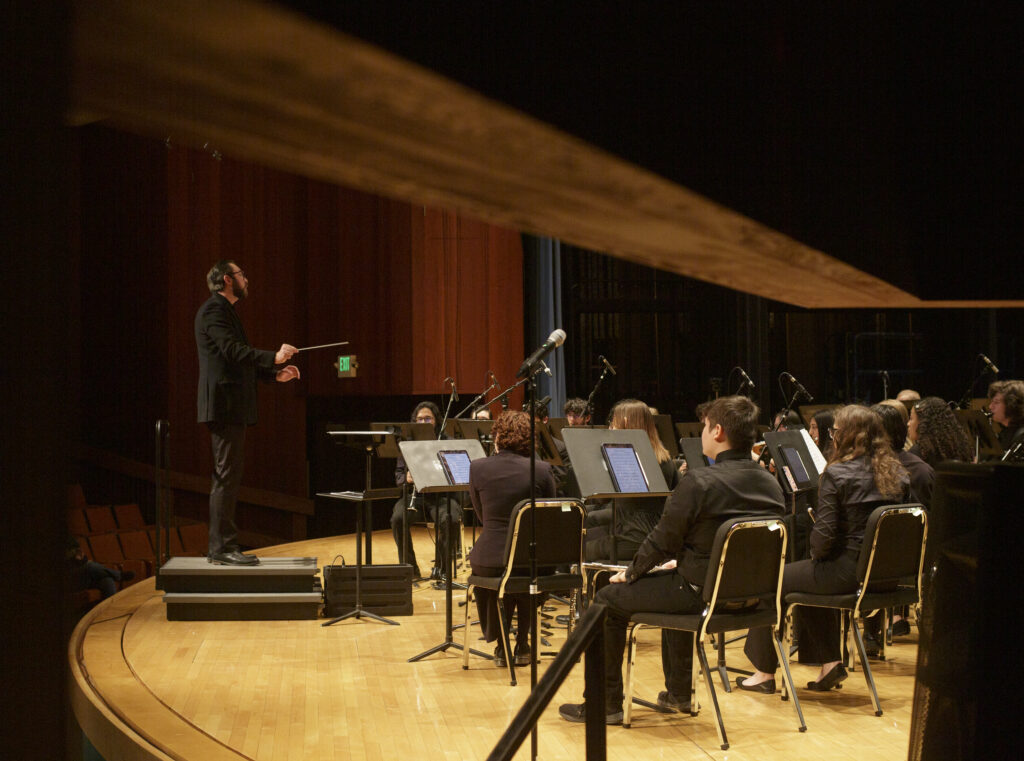
Spencer Hannibal-Smith takes the stage to conduct the Nevada Concert Winds.
The limelight of the horn section came with a band arrangement of Pavel Tchesnokoff’s choral piece, “Salvation is Created,” a roaring hymn with generous room for the instruments’ breadth and power. After “Salvation,” the concert swapped conductors again, this time for Nevada Concert Winds’ full-time, Spencer Hannibal-Smith.
Hannibal-Smith continued the lineup with a Bach cantata, “Jesu, Joy of Man’s Desiring,” which, save for its delicate use of the ensemble’s flutes, felt almost limiting by comparison. The piece’s baroque gravity ended up confining a brilliant group of players to subdued droning, leaving their best flair and charm entirely off the table.
Thankfully, the following “Rhapsody on Christmas Carols,” with a delightful coterie of short solos for the likes of bassoon, trombone, oboe, and more, gave Nevada Concert Winds a chance to stretch its arms and do some aural dancing between various well-known tunes. Such mainstays as “Joy to the World” were visited in a jubilant variety of tones, replete with a captivating, horn-heavy arrangement of “Greensleeves” that ended far too soon.
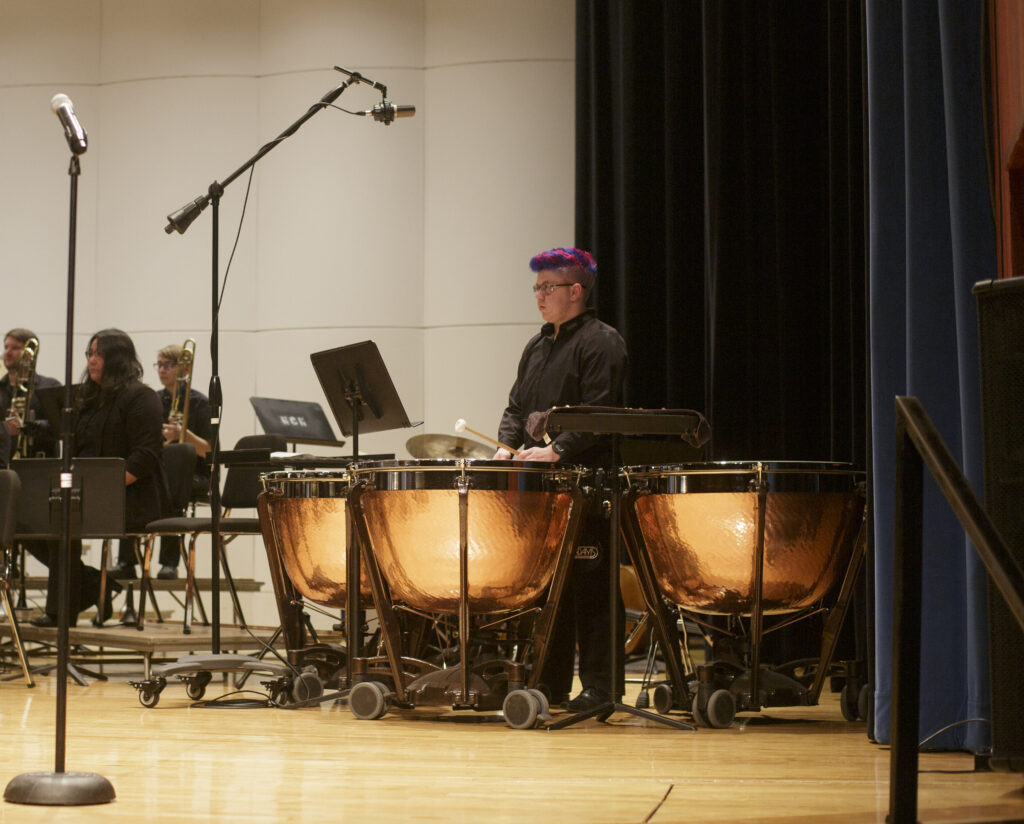
The Nevada Concert Winds’ timpani player stands at the ready during the Dec. 2 concert.
After intermission, the Nevada Concert Winds passed the baton to the Nevada Wind Ensemble, a smaller gathering of players under conductor Reed Chamberlin.
“Good Swing Wenceslas” opened the second half of the program, testing the Wind Ensemble’s mileage in jazz with superlative results. The 2006 piece from jazz musician Sammy Nestico saw Deger return to the stage, this time with an upright bass in tow.
Here it was time to bring out the mufflers for the horns, a familiar sight to aficionados of big band music –– these being the accessories responsible for whittling the full body of a brass instrument into the pleasing whine at home in Glen Miller music and its many cousins. The percussionists and bass, unsurprisingly, nailed their supporting roles.
Answering a simple yet moving band arrangement of Percy Grainger’s “The Sussex Mummers’ Christmas Carol,” whimsy took to the stage in the ensemble’s penultimate selection, a mockingly militaristic “March of the Toys” from Victor Herbert’s 1903 operetta “Babes in Toyland.”
A pair of unconventional choices for order and gusto—saxophone and oboe—joined the march-ready percussion in a romp that favorably evoked the likes of Dukas’ “The Sorcerer’s Apprentice.” A comical role for the bassoons was especially welcome.
To close, the Wind Ensemble enthralled with Howard Hanson’s “Dies Natalis,” a neo-romantic take on a Lutheran hymn. A quiet start led the planned finale to a breathless conclusion, landed by a sparkling role for the ensemble’s several trumpets and a booming use of timpani.
“Sleigh Ride” was of course the unannounced encore.
Peregrine Hart can be reached at peregrineh@sagebrush.unr.edu or on Twitter @pintofperegrine.

